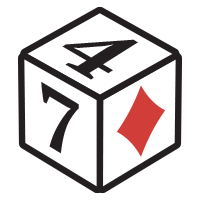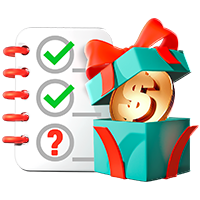There are two main rules for bomb pots:
- Out of position, we almost always play check-first.
Bomb pots are usually played in multiway pots, and leads are simply absent—they only inflate the pot, making it extremely difficult to play out of position on many turns and rivers. On the most dynamic boards, it's best to check 100% of your range and seize the initiative by check-raising with hands you're willing to get all-in with right now or continue to press on suitable runouts. - Try to take down the pot without a showdown.
When playing two boards, it's very rare to win both boards at showdown. Therefore, any line that allows you to knock out your opponents or force them to overpay to realize their equity is especially valuable. Check-raises and maximum squeezes sometimes allow you to take down the pot without waiting for the turn or river, which is the most desirable outcome.
Sample Hand #1: Two Middle Sets
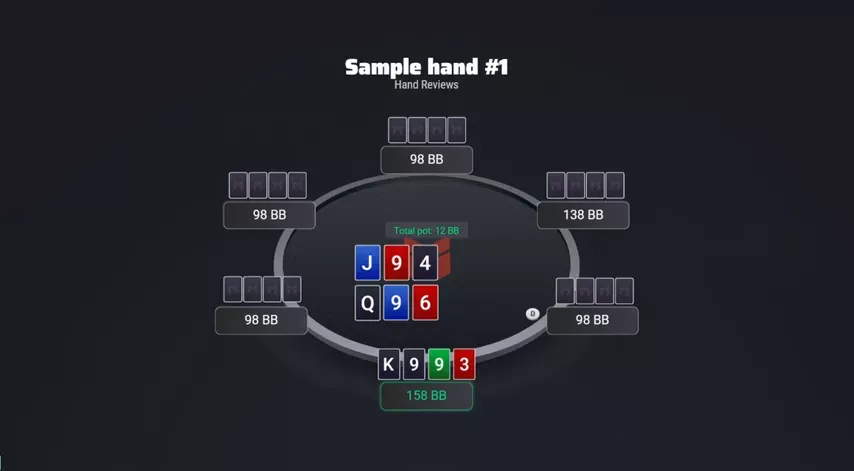
First hand, we're in a multi-pot in the SB, effective stacks are 100 blinds.
We have and a middle set on both boards, while they are both dynamic, the straight draw has a lot of outs.
I'd almost always check here. In bomb pots, players' ranges interact with two boards: someone's high, someone's low. If I lead here out of position, I'll simply inflate the pot, and on the turn and river, I'll be playing a guessing game against several ranges simultaneously.
So with this kind of equity on two boards, I prefer check-raising, which lowers the SPR, forces opponents to overpay for their draws, and allows me to seize the initiative. If someone stays in the pot, then everything is fine: I can then safely shove suitable turns, even if one of the boards worsens.
Checks, then there is a bet and call:
Here, a check-raise with a pot-sized bet of around 40bb is ideal. The goal is to take control of the hand and get more money in while our combined equity is higher than both opponents', and also to force them to fold their vulnerable draws to just one board. If someone then shoves with a hand that's only strong on one board, we'll still have decent equity on both.
After the raise on the flop, there was only one opponent left.
Turn: on the top board, on the bottom board, putting a potential straight on the bottom board.
I checked in the hand because I was scared. below. But in reality, after calling 40bb on the flop, the opponent will almost always have a straight draw like , who play well on both boards, and We'll meet much less often. And even against them, we're doing pretty well, since we're protected by the top board: It doesn't change anything, your opponent will almost never have aces.
Therefore, checking the turn is a mistake that leads to a loss of initiative; it's better to just push. If the opponent folds, we take down the pot, which is a great result. If he calls, we realize our equity right away and avoid unpleasant rivers. In bomb pots, the most important thing is to get our money in while we have an equity advantage on both boards.
Sample Hand #2: Flush Draw | Top Set + Flush Draw
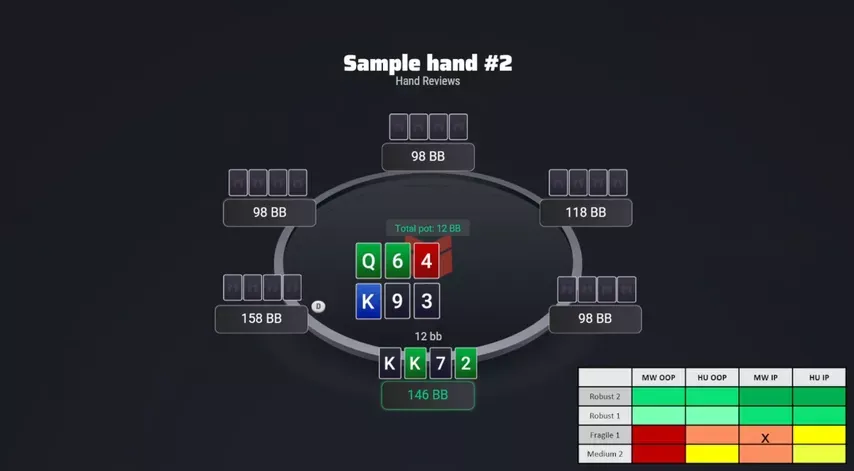
We hit a great hand: we have an overpair with a flush draw on top and top set with a flush draw on the bottom. Both boards are dynamic, so the hand is vulnerable and it's better to play a pot-sized bet. I don't see the point in tempting opponents with smaller sizings—everyone is calling very wide on the flop, and we want to maximize the pot so we can take it down on the turn.
Even if two or three people call, it's no problem. On the contrary, the more calls there are on the flop, the more effectively you can play the turn. This is a typical dynamic of bomb pots: on the flop, the bet looks small, just 12 big blinds, everyone calls, but on the turn, you suddenly have to defend your hand against a bet five times that amount. And then many give up.
He bets the pot, gets two calls, and the pot is 48bb on the turn.
on the top board, on the bottom board.
A straight draw appeared on top, a flush draw on the bottom, but nothing closed. We still have top set on one board, the hand hasn't improved on top, but our combined equity is still high, so we bet pot again. If we check behind, we could easily see a terrible river that's hard to play profitably: even if you're confident in your hand on one board, calling the pot knowing that the other board is guaranteed to lose is usually a losing proposition. It's better to bet now and take the pot down immediately while our equity is still alive and the ranges are still wide.
Sample Board #3: Nut Flush Draw | Open-Ender to Nut Straight
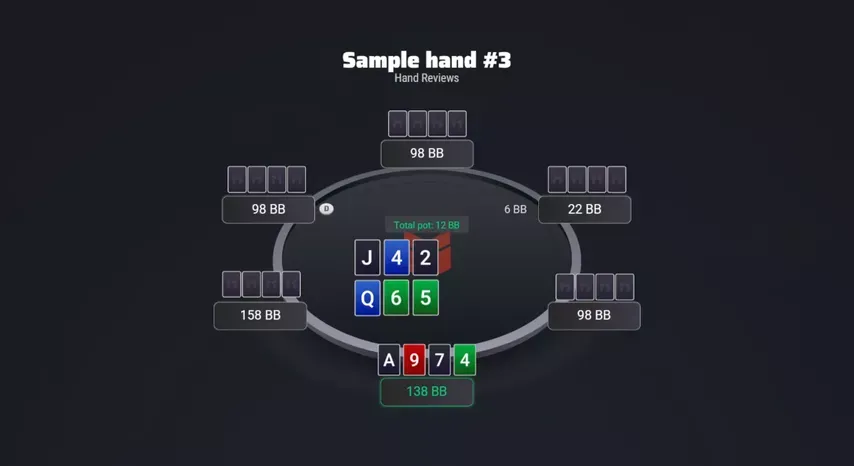
Folding on the flop here would be too tight. We only have to pay 6 big blinds, and we have excellent equity: the nut flush draw on top and a chance to make a straight on the bottom. Keep in mind, though: a naked flush draw on only one board against a big sizing is usually not profitable, since we're paying top dollar for the chance to win only half of it. However, in our situation, the second board adds playability to our hand, so calling is a good idea.
Funke calls, followed by the player in the CO.
Turn: on the top board, on the bottom board, both flushes hit. The raiser pushes all-in for 22 bb.
We never re-push here. Yes, we have the nuts on top, but we almost always have no outs on the bottom. If we push, we isolate ourselves against the strongest part of our opponents' ranges (often someone will have the nuts on the bottom board), and we cut our EV.
It's best to call and leave the third player in the hand. We'll often be in a freeroll: half the pot is already ours, and a portion of whatever the third player bets will ultimately go to us. In multi-way pots, this is a key source of profit.
The second opponent calls.
River: on the top board, on the bottom board. Funke checks and check-raises a 25bb bet into a 98bb pot.
This is a perfect spot for a check-raise. We can't lose on the top board, and a small hand will often choose a flush with a queen or king on top and a medium/weak hand on the bottom. These hands don't hold up to a check-shove.
Our play will allow us to pick up additional chips due to fold equity, and if we're called, we'll win at least half the pot. This is a rare but very profitable spot, although many people don't even use it.
Sample Hand #4: Two Pair | Flush Draw + Straight Draw
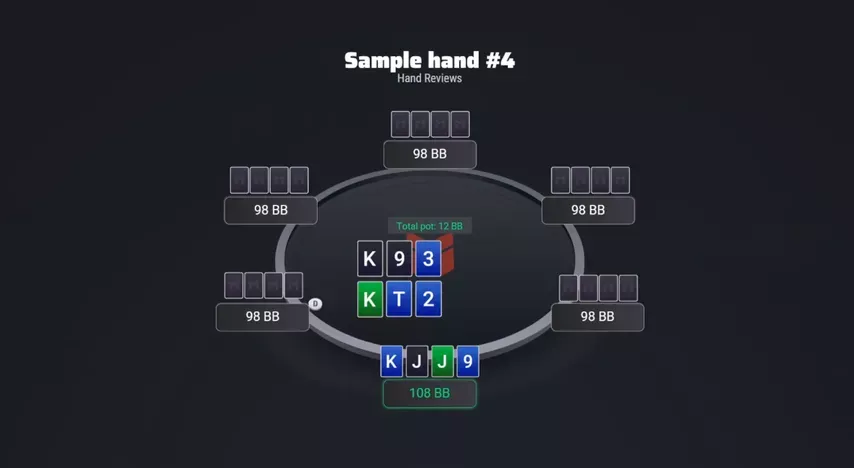
No one has bet before us, so we can fight for the initiative. The hand is strong on both boards, but vulnerable. We need to bet so that overcards, weak gutshots, and backdoors pay dearly for realizing their equity.
If someone bet in front of us, I'd raise rather than call. We're far from the nuts, but it plays great heads-up and in position. In bomb pots, many players bet everything, with hands like AsTs, midrange draws, and flush draws. Against such wide ranges, raising is very profitable: on the turn, opponents either fold or continue calling even though the pot is already too big for their hands.
Only one opponent called the pot-sized bet. Turn: on the top board, on the bottom board.
On turns like these, we need to keep up the pressure. Even if we only have two top pairs on top and one pair on bottom, we're still favorites against a lot of hands. So, these runouts are perfect for a second barrel.
It's important to understand that in bomb pots, many players underestimate how weak their turn ranges are. Without betting, we'll give our opponent a free river, which will often be terrible for us. It's better to force our opponent to fold now and take the pot down without a showdown: even if we get raised, we have enough outs to comfortably call.
With blanks on the river, we'll almost always be ahead on at least one board and be able to put pressure on weaker hands. And remember: on two flops, players too often fold hands that can only win half the pot. They don't like calling all-in with two pair on one board, knowing they're drawing dead on the other. Therefore, a river shove in such spots is a powerful weapon.
Sample Hand #5: Trips | Nut Straight
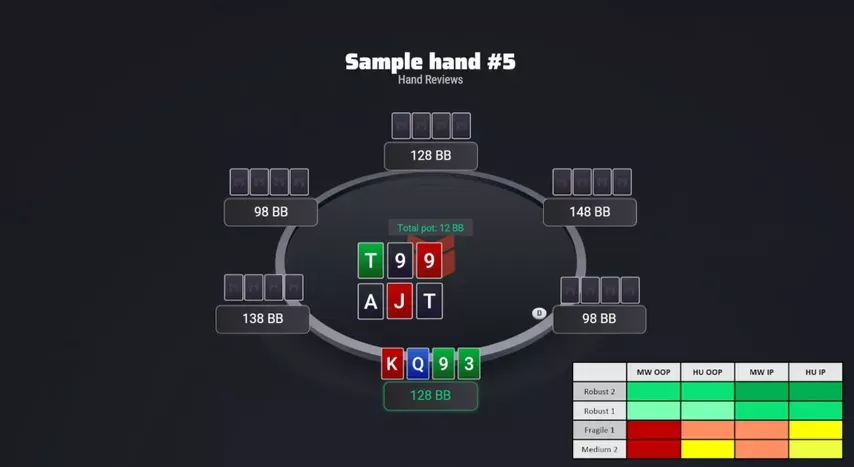
At first glance, the hand seems great: the nuts on one board, trips with decent kickers on the other. But in reality, it's a typical example of a hand vulnerable on both boards. Below are the bare nuts with no redraws: no flush blockers, no protection from a pair. Any spade or pair turns our nuts into a pumpkin. Above are trips, but that's also easy to beat.
We check, BB bets the pot, gets plus pot from the next player and all-in for 148 bb from the third.
This is precisely the situation where most players make their most expensive mistake in bomb pots. They see the nuts on one board and a strong hand on the other and think it's the perfect time to go for stacks. But if you think about it, in a multi-way pot, the chances of scooping up a stack are minimal.
On the top board, our trips are far from ideal; there are already hands that beat us. On the bottom, yes, we have a straight, but how many opponents will also have KQ? Right now, we're just splitting, and if we add in possible flush draws and sets, our equity starts to look completely unconvincing. Mathematically, we'll almost never win more than half the pot—in a three- or four-handed pot, it's nearly impossible to win both boards. We'll have to risk our entire stack, aiming for at most half the pot: a terrible risk-to-reward ratio! Even in the most optimistic scenario, with our opponents' ideal ranges, a call here loses about 25 EVbb in a three-handed pot and another 7 bb in a four-handed pot. It's a catastrophically losing call.

Where to Play Omaha with Bomb Pots
- Chico Network Rooms: They regularly host cash games from PLO10 to PLO200 (with ante sizes for bomb pots ranging from 2 to 5 big blinds), with peak activity in the evenings and nights of GMT time. Tournaments are also available.
- VangPoker: Action is fast-paced at PL25 tables. Antes range from 0.1 to 3 big blinds. Games are played irregularly, usually in the morning and afternoon Moscow time. Cash drops (called Bomb Jackpots) of 15 to 100 big blinds are occasionally awarded during hands.
- Phenom Poker: Bomb pots have recently appeared on Phenom Poker, where you can almost always find action from PLO10 to PLO2K. 5- and 6-card Omaha are the most popular.
- PPPoker: The easiest way to find bomb pots in apps is on PPPoker, where almost all five-card Omaha tables feature them. The selection is huge, with dozens of alliances from different regions, so you can find action at any time of day. Antes range from 3-8 big blinds, depending on the table settings.
- ClubGG: This mobile app offers a good selection of games in the Massiv alliance, with games ranging from PLO10 to PLO1k. Traffic peaks in the evening and early morning Moscow time, with bomb pots played every five minutes, and ante values typically at 4bb.
- PokerBros: There are also tables on PokerBROS , up to PL400, in addition to classic Omaha, they play five- and six-card.
To start playing in mobile club apps, please contact our support team.
The full PLO Mastermind: Double-Board Bomb Pots course, featuring 37 lessons and over 9 hours of video, is available for purchase at the GipsyTeam store.
